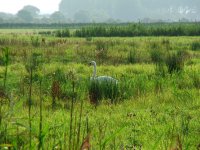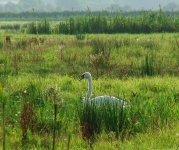Hindolbittern
Wildlife artist & good egg
I'm struggling to get to grips with my first digital camera that I can do more with than just point and click.
It's a Fuji S5500 with 10x optical zoom (at max quality the digital zoom doesn't come into play). This swan is a fairly typical example. It isn't the best shot I took in terms of the way the swan was holding its neck but the majority were much less clearly focussed - I do end up deleting a lot of "waste". I took it on full zoom (no tripod, although I do have one and am starting to use it). The first shot is it unadulterated and the second cropped and the swan "lassoed" and "sharpened more" on paint shop pro studio. Both are obviously resized to 800 to upload here.
I had the camera set on maximum quality, shutter priority, Exposure bias F/0.9, Brightness F/15.2, exposure time 1/125 second, f number 7, Lens aperture F7.0, Max aperture F/2.8, Shutter speed 1/128 second, focal length 57 mm, ISO 64. It says here!
Most of these technicalities are still some way above my head...
Any help very gratefully received.
Many thanks,
HB
It's a Fuji S5500 with 10x optical zoom (at max quality the digital zoom doesn't come into play). This swan is a fairly typical example. It isn't the best shot I took in terms of the way the swan was holding its neck but the majority were much less clearly focussed - I do end up deleting a lot of "waste". I took it on full zoom (no tripod, although I do have one and am starting to use it). The first shot is it unadulterated and the second cropped and the swan "lassoed" and "sharpened more" on paint shop pro studio. Both are obviously resized to 800 to upload here.
I had the camera set on maximum quality, shutter priority, Exposure bias F/0.9, Brightness F/15.2, exposure time 1/125 second, f number 7, Lens aperture F7.0, Max aperture F/2.8, Shutter speed 1/128 second, focal length 57 mm, ISO 64. It says here!
Most of these technicalities are still some way above my head...
Any help very gratefully received.
Many thanks,
HB





